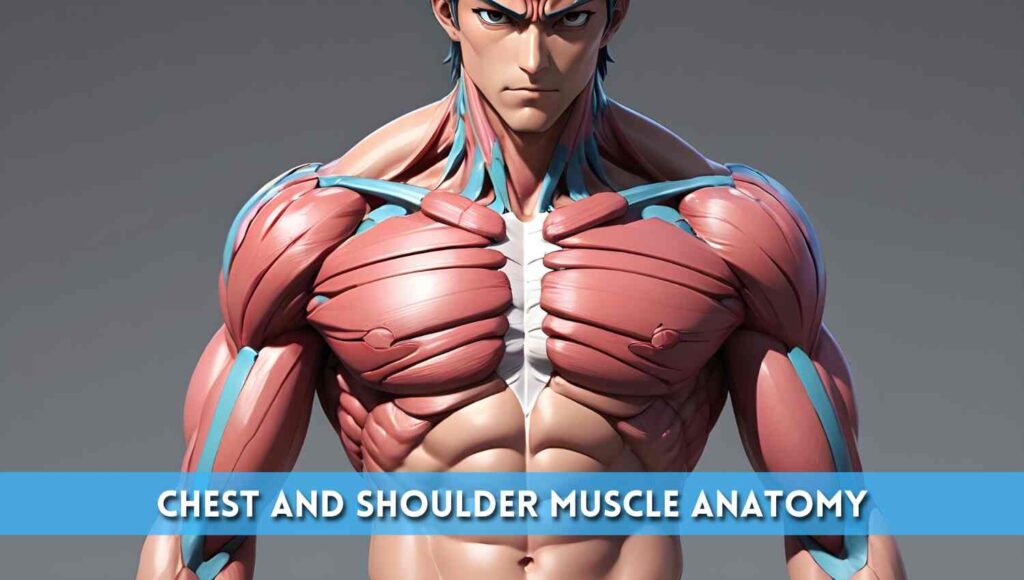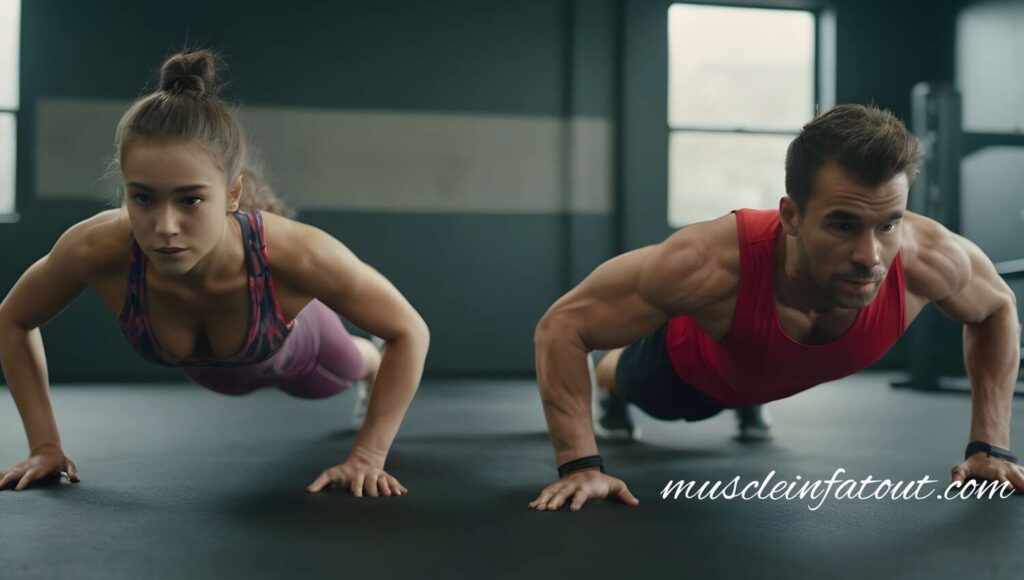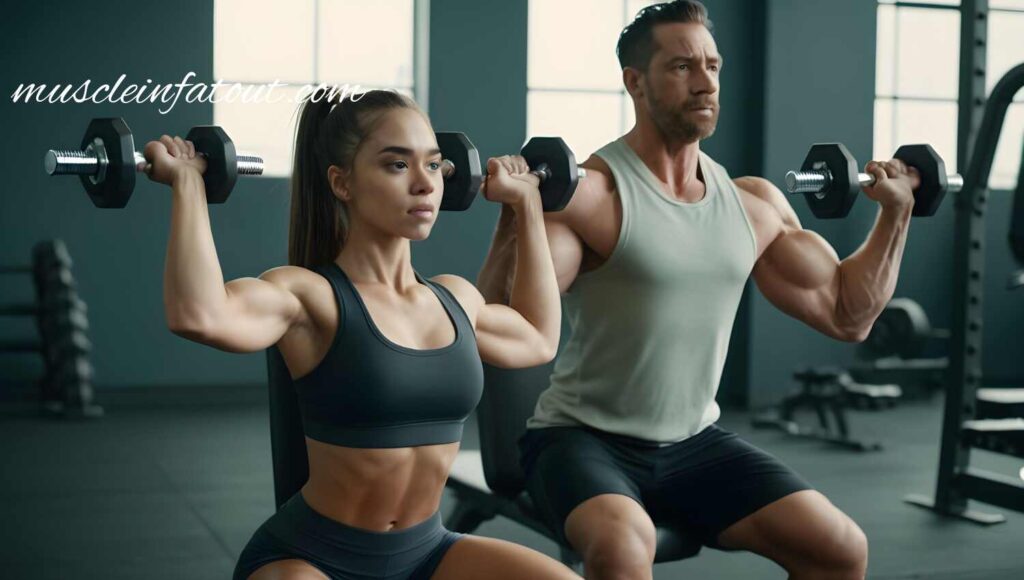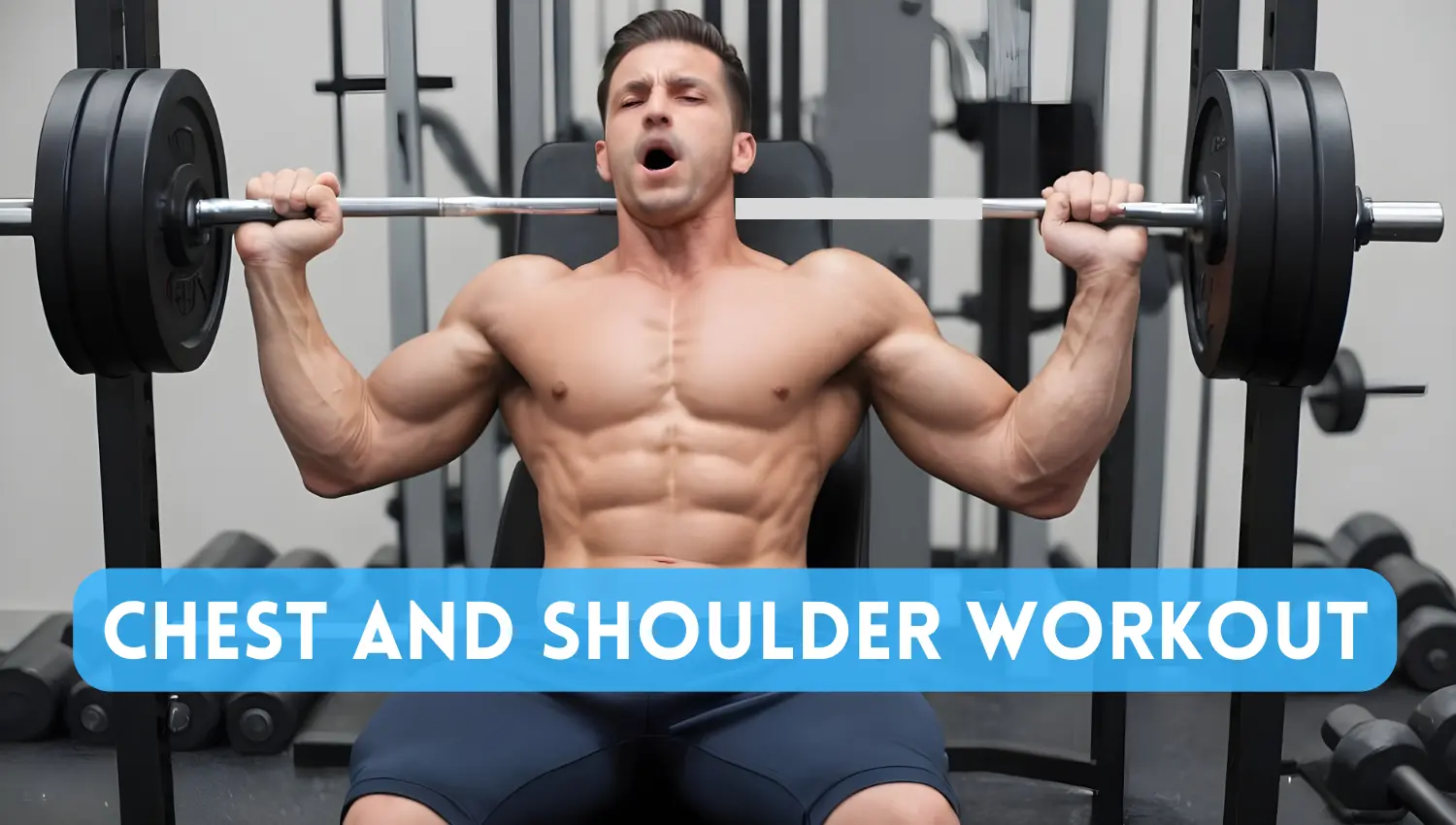Introduction
Welcome to the ultimate guide on maximizing your upper body gains through effective chest and shoulder training. Whether you’re a gym newbie or a seasoned lifter, understanding the benefits and strategies of combining chest and shoulder workouts can significantly impact your fitness journey.
Table of Contents
ToggleIn this blog post, we will delve into the advantages and disadvantages of training these muscle groups together, explore the anatomy of chest and shoulder muscles, provide tailored workout routines, discuss training frequency and splits, emphasize muscle recovery and proper nutrition, and conclude with key takeaways to help you sculpt a stronger and more defined upper body.
Pros and Cons of Combining Chest and Shoulder Workout Same Day-
Combining chest and shoulder workouts can be a smart and time-saving strategy, but its effectiveness depends on various factors like your fitness objectives, experience level, and recovery ability. Here’s what you should consider:
Advantages:
- Synergistic Training: Engaging both chest and shoulder muscles simultaneously enhances overall muscle development and coordination.
- Time-Efficiency: Targeting multiple muscle groups in one session saves time.
- Strength and Stability: Improves upper body strength and stability crucial for challenging exercises.
- Variety and Challenge: Prevents workout plateaus by incorporating diverse exercises.
- Functional Fitness: Mimics real-life movements for enhanced daily activities and sports performance.
Disadvantages:
- Reduced Muscle Isolation: Challenges isolating each muscle group effectively.
- Risk of Overuse Injuries: Increases the risk of overuse injuries without adequate rest.
- Less Attention to Weak Areas: Difficulty in targeting specific weaker muscle groups.
- Diminished Recovery: Insufficient recovery time may hinder muscle growth.
- Less Flexibility in Training Schedule: Limits flexibility in adjusting workout schedules.
Understanding Chest and Shoulder Muscle Anatomy

Before stepping into the chest and shoulder workout we must understand the muscle anatomy of chest and shoulder muscle groups. By understanding muscle anatomy, we can train our muscles more effectively and get the desired results.
Chest Muscles:
The chest muscles contain the two muscle groups that are, pectoralis major and pectorals minor (normally described as upper, middle, and lower chest muscle fibers) responsible for movements like pushing.
Shoulder Muscles:
The shoulder muscles include four major muscle groups, and the deltoid muscle group is one of them. The deltoid muscles contain 3 major heads (anterior, lateral, and posterior delt muscle heads), which are crucial for shoulder movement and stability.
Tailoring Your full chest and shoulder workout
There are so many chest and shoulder workouts that we can categorize into different sections such as compound, isolation, and bodyweight workouts, by categorizing the workouts we have more options for sections of the good chest and shoulder workout for better results.
Incorporate these exercises into your schedule and engage various parts of the chest and shoulders for balanced development.
Chest and Shoulder Workout Routine
Warm-Up (5-10 minutes):
Jump Rope
Arm Circles
Dynamic Shoulder Stretching
Compound Movements:
Barbell Bench Press
Overhead Barbell Press
Superset for Hypertrophy:
Incline Dumbbell Flies and Lateral Raises
Isolation Movements:
Chest Dips
Face Pulls
Finisher – High-Intensity Burnout:
Push-Ups to Failure
Dumbbell Shoulder Press
Cool Down and Stretching:
Focus on chest and shoulder stretches for flexibility and recovery.
Chest And Shoulder Workout Routine PDF Download Form Here
Tips For an Effective Chest and Shoulder Workout

Neglecting Proper Warm-Up: Skipping a thorough warm-up before engaging in chest and shoulder exercises can increase the risk of injury and reduce workout effectiveness. Always include dynamic stretches and light cardio to prepare your muscles for the workout.
Poor Form: Using improper form during exercises like bench presses or shoulder presses can lead to injuries and limit muscle engagement. Focus on maintaining correct posture and technique throughout each movement to maximize results and prevent strain.
Overloading Weight: Lifting weights that are too heavy can compromise form and increase the risk of injury. Gradually increase weights based on your strength level to challenge your muscles effectively without sacrificing technique.
Ignoring Muscle Imbalances: Failing to address muscle imbalances between the chest and shoulders can hinder progress and lead to potential injuries. Incorporate exercises that target weaker areas to ensure balanced muscle development.
Insufficient Recovery: Inadequate rest between sets or workouts can impede muscle recovery and growth. Allow for proper rest periods and consider incorporating rest days into your routine to prevent overtraining and promote optimal recovery.
Lack of Variation: Relying on the same chest and shoulder exercises without introducing variety can lead to plateaus and reduced effectiveness. Include a mix of upper body compound workouts and isolation exercises to target different muscle fibers and prevent stagnation.
Not Listening to Your Body: Ignoring signs of fatigue, pain, or discomfort during workouts can result in overuse injuries and setbacks. Pay attention to your body’s signals, adjust your workout intensity as needed, and prioritize recovery to avoid burnout.
Training Frequency and Split

For Beginners
Beginners can benefit from a full-body workout 2-3 times a week, which allows for more frequent exposure to chest and shoulder exercises.
As beginners typically have lower training volume and intensity, they can recover more quickly, making it feasible to train these muscle groups more frequently.
For Intermediate and Advanced Lifters
Intermediate and advanced lifters may find a push-pull-legs workout (PPL) split beneficial, where chest and shoulders are trained on the push day.
This split involves training different muscle groups on different days to allow for more focused and intense workouts, promoting muscle growth and strength gains.
Body-Part Split
For those aiming to maximize muscle growth, a body-part split may be more suitable.
This involves training each muscle group once a week, providing greater recovery time and the ability to train with more intensity.
Individual Considerations
The optimal training frequency and split for chest and shoulder workout depend on individual goals and preferences.
Experimenting with different splits and frequencies can help determine what works best for each individual.
It’s crucial to listen to your body, adjust training accordingly, and prevent overtraining and injury.
Muscle Recovery and Nutrition

Muscle Recovery
Rest and Sleep: Adequate rest and quality sleep are essential for muscle recovery and growth. Aim for 7-9 hours of sleep per night to allow your body to repair and rebuild muscle tissue.
Active Recovery: Incorporating active recovery days into your routine can promote blood flow, reduce muscle soreness, and enhance recovery. Activities like yoga, light cardio, or stretching can aid in muscle repair.
Hydration: Staying hydrated is vital for muscle recovery. Water helps transport nutrients to muscles and removes waste products, facilitating the recovery process. Aim to drink plenty of water throughout the day.
Nutrient Timing: Consuming a balanced meal or snack containing protein and carbohydrates within 30 minutes to an hour after your workout can support your proper nutrition and muscle recovery and replenish glycogen stores.
Proper Nutrition
Protein Intake: Protein is crucial for muscle repair and growth. Include lean protein sources like chicken, fish, tofu, or legumes in your meals to support muscle recovery after workouts.
Carbohydrates: Carbohydrates are essential for replenishing glycogen stores and providing energy for workouts. Opt for complex carbohydrates like whole grains, fruits, and vegetables to fuel your training sessions.
Healthy Fats: Incorporating healthy fats like avocados, nuts, and olive oil into your diet can support overall health and provide sustained energy for workouts.
Micronutrients: Ensure you’re getting an adequate intake of vitamins and minerals to support muscle function and recovery. Include a variety of fruits, vegetables, and whole foods in your diet to meet your micronutrient needs.
Meal Timing: Eating regular meals and snacks throughout the day can help maintain energy levels and support muscle recovery. Aim for a balance of protein, carbohydrates, and fats in each meal to optimize nutrient absorption.
Conclusion
In summary, combining the chest and shoulder workouts can be effective if done right, offering time-saving benefits and muscle synergy. Experiment with different approaches and listen to your body to find what works best for you. Always consult with a fitness expert or trainer before starting any new routine. Happy lifting!


